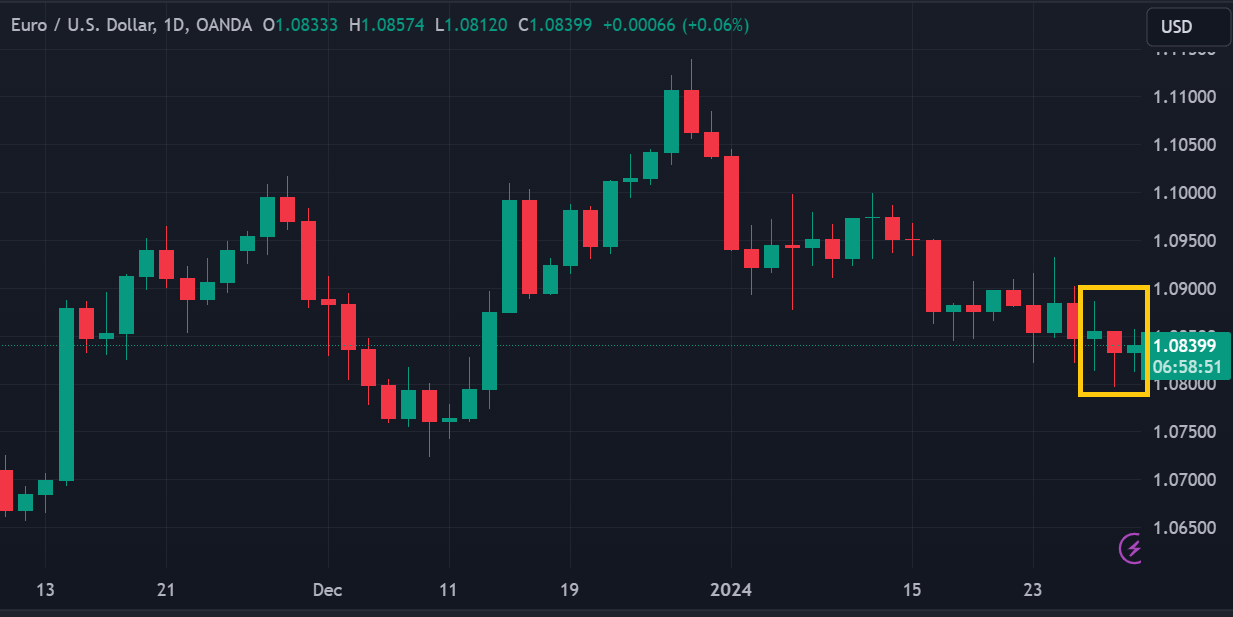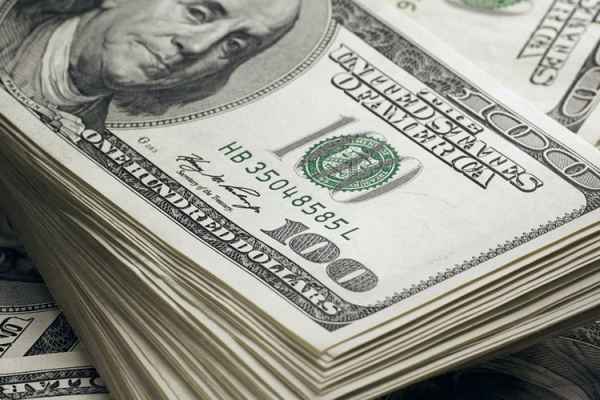Eurozone economic data is supporting EUR/USD at the moment, but the FOMC meeting will be a more significant catalyst.
The Eurozone escaped recession in the fourth quarter of 2023, concluding today's (January 30) Gross Domestic Product (GDP) report. The report stabilized the EUR/USD rate between 1.0800 and 1.0850 ahead of the Fed's FOMC meeting tomorrow.

The Eurozone GDP report showed 0% (quarter-over-quarter) growth in Q4/2023, better than the consensus estimate pegged at -0.1%. Germany's economy continued to shrink, but the strengthening economies of Spain and Portugal supported the region's growth.
The slump in the euro exchange rate was momentarily halted thanks to the report. However, markets remain confident that the ECB will start cutting interest rates in April. These market expectations will continue to weigh on the euro.
"For the ECB, (Tuesday's) figure eases the pressure somewhat, but it is clear that the so-called soft landing being pursued by (ECB President Christine) Lagarde has been somewhat softer than many would have liked," said Joshua Mahony, chief market analyst at Scope Markets.
"Risks remain skewed to the downside for the single currency as long as rate cut expectations still prevail among investors," UniCredit analysts wrote in a note to clients cited by Reuters.
EUR/USD traders are next focused on the FOMC meeting on January 30-31. Given that the Federal Reserve is unlikely to change interest rates in the near future, markets will be looking to Fed Chair Jerome Powell's press conference after the meeting for a preview of future policy.
Current market data suggests a roughly 46% chance for a Fed rate cut scenario starting in March and a roughly 90% chance for a cut scenario starting in May. EUR/USD could strengthen further if the market believes the Fed will cut rates earlier than the ECB. Conversely, EUR/USD could weaken if the ECB is likely to cut rates first.

 Dedicated FREE FOREX VPS
Dedicated FREE FOREX VPS Free FOREX Virtual Private Server
Free FOREX Virtual Private Server MT4 Demo Contest, Get $500
MT4 Demo Contest, Get $500 Sign Up for an Account, Claim 60% Deposit Bonus
Sign Up for an Account, Claim 60% Deposit Bonus Free MT4/MT5 VPS 2024
Free MT4/MT5 VPS 2024 Send E-mail and Get Free Merchandise
Send E-mail and Get Free Merchandise $1K Refer a Friend Bonus for Pepperstone Pro clients
$1K Refer a Friend Bonus for Pepperstone Pro clients Maximize Your Earnings with 100% Deposit bonus
Maximize Your Earnings with 100% Deposit bonus Trade to Win, $5,000 Monthly Demo Contest
Trade to Win, $5,000 Monthly Demo Contest Claim 30% + 15% Deposit Bonus from LiteFinance
Claim 30% + 15% Deposit Bonus from LiteFinance






